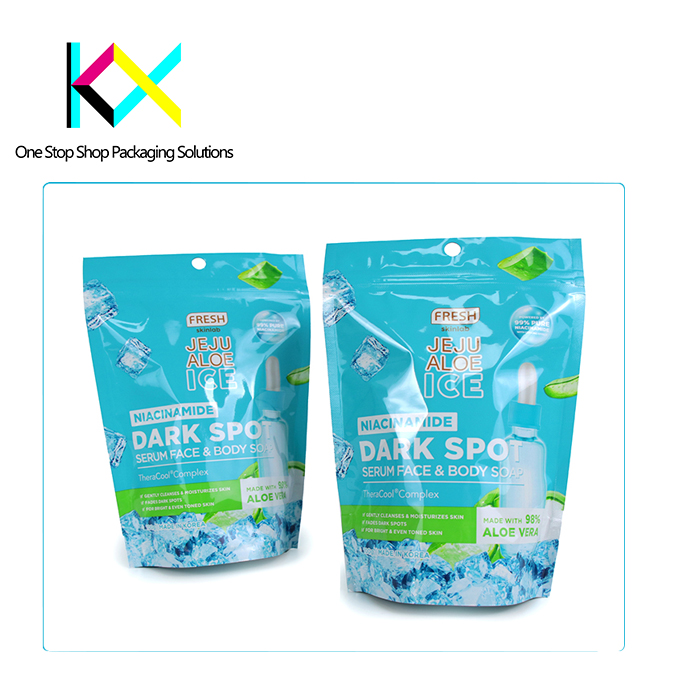What Are Common Food Packaging Types and Their Ideal Applications? Exploring Modern Solutions in Flexible Packaging
The food packaging industry is undergoing a transformative shift, driven by sustainability mandates, e-commerce growth, and smart technology integration. Understanding common food packaging types and their optimal applications is crucial for brands aiming to balance functionality, cost, and environmental impact. From resealable pouches for snacks to vacuum-sealed films for fresh produce, common food packaging types now incorporate cutting-edge materials and digital innovations to meet evolving consumer and regulatory demands. Let’s unpack the key common food packaging types reshaping the market and their ideal product pairings.


1. Stand-Up Pouches with Smart Zippers
Ideal for: Dry snacks, coffee, pet food, and powdered supplements.
Innovations:
Monomaterial PE/PP Structures: 100% recyclable designs like Coveris’ ReCover™ meet APR certifications while maintaining barrier properties.
Integrated QR Codes: General Mills’ Nature Valley bars use Digimarc barcodes for recycling instructions and recipe ideas.
Anti-Static Layers: Critical for protein powder packaging to prevent clumping.
Sustainability Edge: Brands like P&G’s Iams now use stand-up pouches with 30% post-consumer recycled (PCR) content.

2. Vacuum Skin Packaging (VSP)
Ideal for: Fresh meats, smoked fish, and artisanal cheeses.
Innovations:
Active Oxygen Scavengers: Sealed Air’s Cryovac® OS films extend beef shelf life by 50%, reducing retail waste.
PFAS-Free Adhesion: Mitsubishi’s Guardiant™ replaces fluorochemicals in VSP films, aligning with EU’s 2025 ban.
Print-Ready Surfaces: Laser-etching allows allergen info without ink migration risks.
Case Study: Danish Crown’s VSP redesign reduced plastic use by 25% while improving meat visibility.

3. Compostable Flow Wrap Films
Ideal for: Organic snacks, tea bags, and single-serve condiments.
Innovations:
Marine-Degradable PLA: TIPA’s films decompose in seawater within 24 weeks, used by Pukka Herbs for tea packaging.
Heat-Sealable Paper: BillerudKorsnäs’ FibreForm® combines compostability with grease resistance for chocolate bars.
Edible Inks: SunChemical’s NatureFlex™ prints with algae-based pigments for zero-waste designs.
Regulatory Driver: Meets France’s AGEC Law requirements for home compostability.

4. Microwave-Sterilizable Retort Pouches
Ideal for: Ready-to-eat meals, baby food, and plant-based curries.
Innovations:
Aluminum-Free Barriers: Amcor’s AmLite UltraFlex uses SiO₂ coatings for 135°C sterilization compatibility.
Steam Release Valves: Aptar’s SteamVent™ prevents pouch bursts during reheating.
Dual-Ovenable Films: Winpak’s solutions survive microwave and convection heating.
Sustainability Shift: Nestlé’s Gerber baby food pouches now use 50% recycled aluminum in retort layers.

5. Paper-Based Hybrid Pouches
Ideal for: Bakery items, granola, and premium confectionery.
Innovations:
FSC-Certified Paper: Mondi’s FunctionalBarrier Paper replaces plastic in 80% of the structure.
Water-Based Coatings: Michelman’s Hydroluxe® provides oil/grease resistance without PFAS.
Magnetic Reclosability: ZipGuard® magnetic strips enable paper pouch resealing—pioneered by Kellogg’s Special K.
E-Commerce Ready: Survives 3-meter drop tests for direct-to-consumer shipping.

6. Active Modified Atmosphere Packaging (MAP)
Ideal for: Fresh salads, berries, and prepared meals.
Innovations:
-
Ethylene Absorbers: BASF’s Shelfplus® O2 extends berry freshness by 7 days.
-
CO₂ Emitters: PerfoTec’s laser-perforated films optimize gas mix for leafy greens.
-
IoT-Enabled Sensors: Emerson’s OxySense® measures real-time O2 levels in transit.
Tech Bonus: Walmart’s blockchain system tracks MAP freshness from farm to shelf.
7. Spouted Pouches with Dispensing Accuracy
Ideal for: Liquid nutrition, cooking oils, and sports gels.
Innovations:
-
Drip-Free Spouts: Huhtamaki’s FusionFlow™ reduces waste in olive oil packaging.
-
Child-Resistant Caps: Aptar’s CR2 closures meet CPSC standards for vitamins.
-
Transparent EVOH Windows: Allows visibility without sacrificing barrier performance.
Sustainability Angle: Now available in monomaterial PE for curb-side recycling.
Emerging Trends Redefining Applications
-
3D-Printed Custom Trays: For delicate patisserie items, reducing breakage by 40%.
-
Self-Chilling Labels: Phase-change materials activate during delivery for meal kits.
-
Mycelium Cushioning: Mushroom-based padding replaces foam in glass jar shipments.
Why Application-Specific Design Matters
Selecting common food packaging types requires evaluating:
-
Product Sensitivity (oxygen, moisture, light)
-
Supply Chain Risks (e-commerce drops, temperature swings)
-
End-of-Life Pathways (recycling, composting, reuse)
At FlexiPack Solutions, we specialize in pairing common food packaging types with advanced features like blockchain traceability and nanocomposite barriers. Recently, we helped a keto snack brand reduce packaging weight by 35% while achieving 98% recyclability.
The Takeaway: From compostable flow wraps to intelligent MAP systems, common food packaging types are no longer one-size-fits-all solutions. By aligning packaging formats with product-specific needs and sustainability goals, brands can future-proof their offerings while meeting the dual demands of regulators and eco-conscious consumers.
You can visit our website to know more about our compostable pouch:
